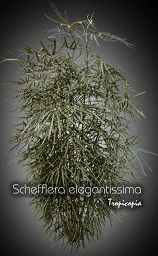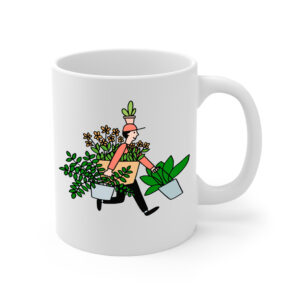Table of contents
False aralia

Latin Name: Schefflera elegantissima
Category: Aralia
Family: Araliaceae
Origin: New Calidonia
Climate: Tropical
Growing Zones: 11-10
Care Instructions
The False aralia (Schefflera elegantissima) is a tropical plant that originates from New Calidonia. This aralia plant belongs to the Araliaceae family and is well-suited for growing in USDA zones 11-10.
Complete Care Guide for False Aralia (Schefflera elegantissima)
Watering Requirements
The False Aralia, or Schefflera elegantissima, thrives best with a consistent watering schedule that keeps the soil evenly moist but not soggy. During the growing season, which typically spans from spring to early fall, water the plant when the top inch of soil feels dry to the touch. This usually translates to watering once a week, but be sure to adjust based on your specific environment, as factors like humidity and temperature can affect soil moisture levels. In the winter months, when the plant enters a dormant phase, reduce watering frequency to every two weeks or when the soil is dry to a depth of two inches. Overwatering can lead to root rot, so always ensure that the pot has drainage holes and that excess water can escape.
Light Conditions
False Aralia prefers bright, indirect light for optimal growth. While it can tolerate lower light conditions, insufficient light may result in leggy growth and a loss of the plant’s characteristic leaf variegation. Ideally, place your False Aralia near a window that receives filtered sunlight, such as through sheer curtains. If you notice the leaves starting to yellow or drop, it may be a sign that the plant is receiving too much direct sunlight or not enough light overall. For indoor settings, rotating the plant every few weeks can help ensure even light exposure on all sides, promoting balanced growth.
Soil Preferences
The ideal soil for False Aralia is a well-draining potting mix that retains some moisture without becoming waterlogged. A blend of standard potting soil mixed with perlite or coarse sand can provide the necessary drainage and aeration. Aim for a slightly acidic to neutral pH level (around 6.0 to 7.0) for optimal nutrient uptake. Fertilization should be done during the growing season with a balanced, water-soluble fertilizer every 4-6 weeks. In the fall and winter, reduce or eliminate fertilization as the plant’s growth slows down. Always ensure that the pot has adequate drainage to prevent water from pooling at the bottom, which can lead to root rot.
Pests and Diseases
False Aralia is generally resilient but can be susceptible to common houseplant pests such as spider mites, mealybugs, and scale. Regularly inspect the undersides of leaves and stems for any signs of infestation. If you notice pests, treat them promptly with insecticidal soap or neem oil, ensuring to cover all affected areas. Additionally, maintaining good air circulation around the plant can help prevent fungal diseases like powdery mildew. If you observe any signs of disease, such as discolored leaves or wilting, remove affected parts immediately and adjust care practices to improve air circulation and reduce humidity around the plant.
Special Care Tips
To keep your False Aralia healthy and thriving, consider the following special care tips: First, regularly dust the leaves with a damp cloth to keep them clean and allow for optimal photosynthesis. This also helps prevent pests from settling on the foliage. Second, if you notice the plant becoming too tall or leggy, consider pruning it back to encourage bushier growth. Use clean, sharp scissors to make cuts just above a leaf node. Lastly, be mindful of temperature fluctuations; False Aralia prefers temperatures between 65°F and 80°F (18°C to 27°C) and should be protected from cold drafts and sudden temperature changes. By following these care tips, you can ensure that your False Aralia remains a stunning addition to your indoor plant collection.








